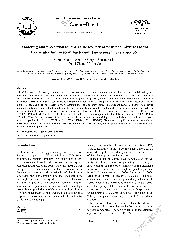摘要
In China, water pollution by pesticide mixtures has constituted a serious environmental problem due to potential toxicity and bioaccumulation. But few pesticide combinations have exactly similar and dissimilar mechanisms of action. For this purpose, in tests with the freshwater luminescent bacterium (Vibrio qinghaiensis sp.-Q67), ten pesticides, including three herbicides and seven insecticides, were selected as test substances. Concentration response analysis was performed for ten individual substances, and for mixtures containing all ten substances in twelve different concentration ratios (based on UDCR and EECR methods). The observed mixture toxicity was compared with predictions by the two models, concentration addition (CA) and independent action (IA). The toxicity of the tested mixtures showed a good agreement with those predicted by the concept of CA except four UDCR mixtures: UD10-2, UD10-4, UD10-8 and UD10-10. To examine the influence of imidacloprid in the four UDCR mixtures (UDIO-2, UD10-4, UD10-8, UD10-10), it was removed from the ten-pesticide mixtures and the remaining nine chemicals were combined at the same relative proportions based on the UDCR method (UD9-2, UD9-4, UD9-8, UD9-10). There was not significant departure from CA for the scattered points with the nine remaining pesticides omitting imidacloprid. Thus, imidacloprid may significantly influence the other pesticides due to its properties.
- 出版日期2010
- 单位同济大学
